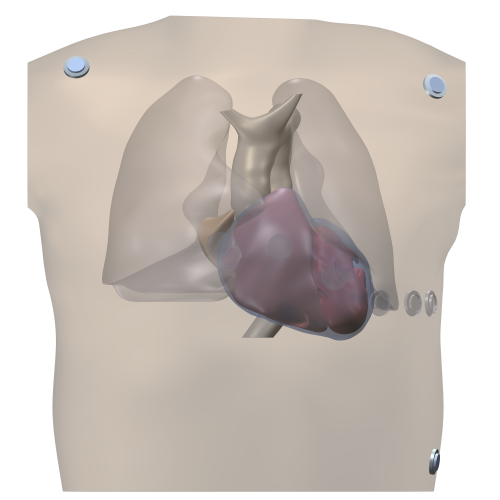An in-silico analysis of the effect of heart
position and orientation on the ECG morphology and
vectorcardiogram parameters in patients with heart
failure and intraventricular conduction defects
J. Electrocardiol. 2015 48:617-625.
doi:10.1016/j.jelectrocard.2015.05.004
abstract
Aim The aim of this study was to investigate the influence of geometrical factors on the ECG morphology and vectorcardiogram (VCG) parameters.
Methods Patient-tailored models based on five heart-failure patients with intraventricular conduction defects (IVCDs) were created. The heart was shifted up to 6 cm to the left, right, up, and down and rotated +/−30° around the anteroposterior axis. Precordial electrodes were shifted 3 cm down.
Results Geometry modifications strongly altered ECG notching/slurring and intrinsicoid deflection time. VCG parameter changes were small for QRS duration (−6% to +10%) and QRS-T angle (−6% to +3%), but considerable for QRS amplitude (−36% to +59%), QRS area (−37% to +42%), T-wave amplitude (−41% to +36%), and T-wave area (−42% to +33%).
Conclusion The position of the heart with respect to the electrodes is an important factor determining notching/slurring and voltage-dependent parameters and therefore must be considered for accurate diagnosis of IVCDs.
context
This paper was presented in the MALT meeting in April 2014 in Noordwijk, The Netherlands.
acknowledgements
This work was supported by a grant from the Swiss National Supercomputing Centre (CSCS) under project ID 397. The authors gratefully acknowledge financial support by Fondazione Cardiocentro Ticino, the Theo Rossi di Montelera Foundation, the Mantegazza Foundation, and FIDINAM to the Center of Computational Medicine in Cardiology.
